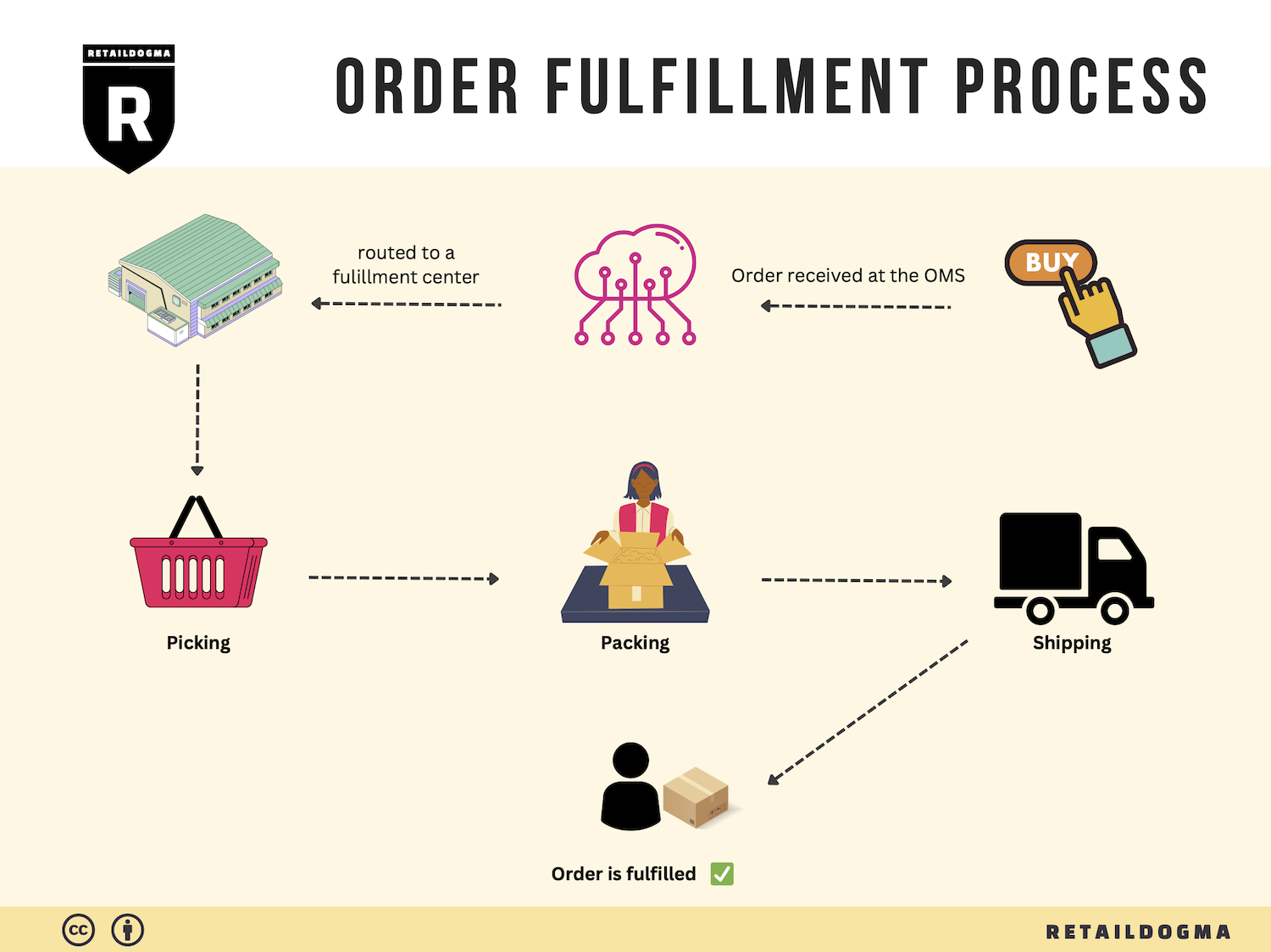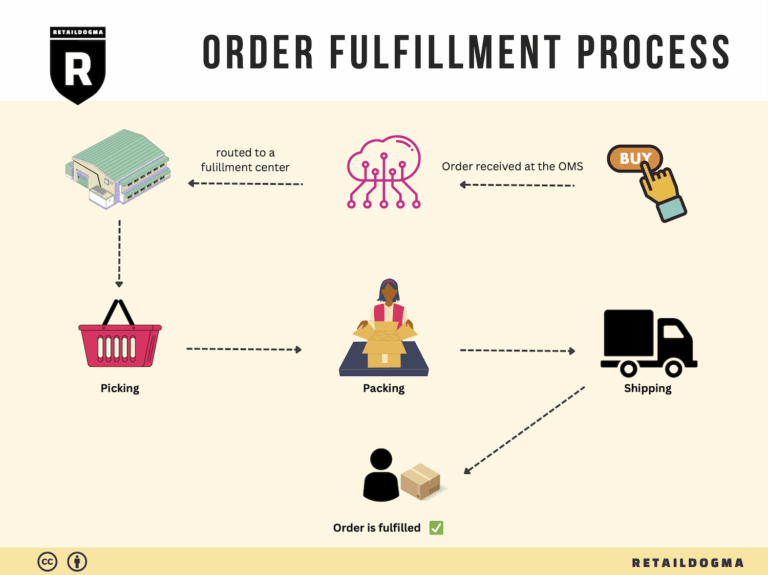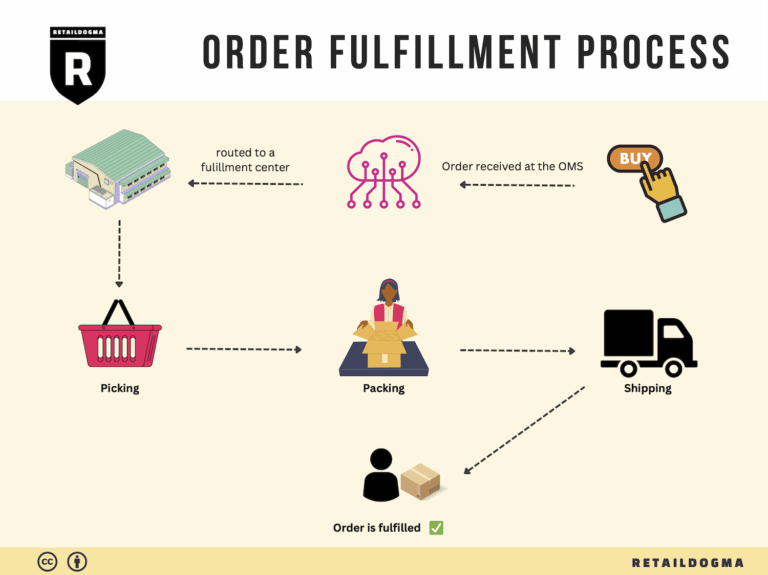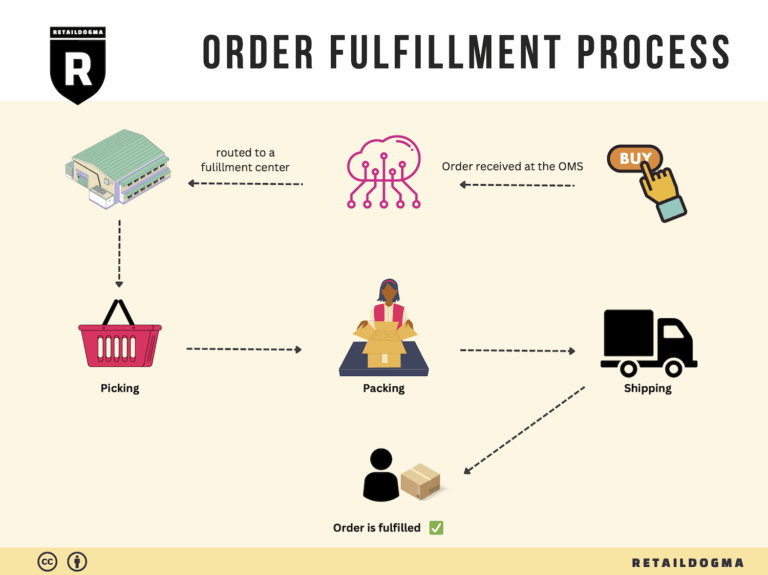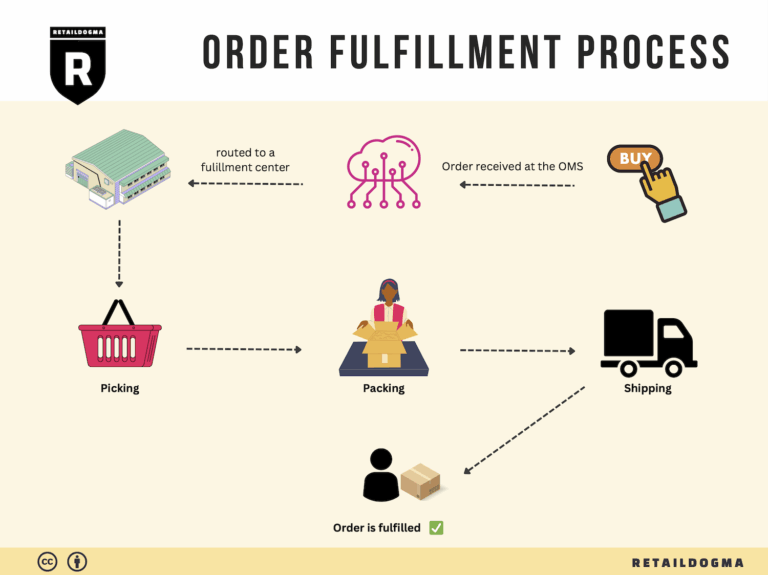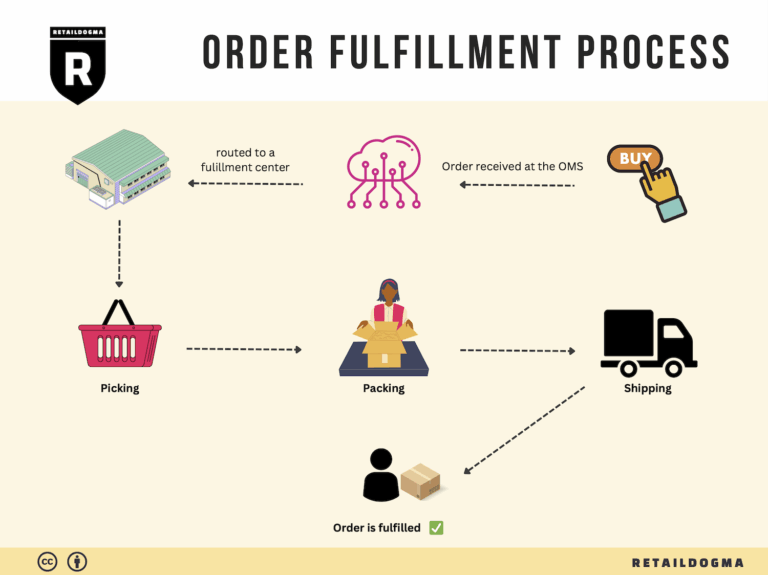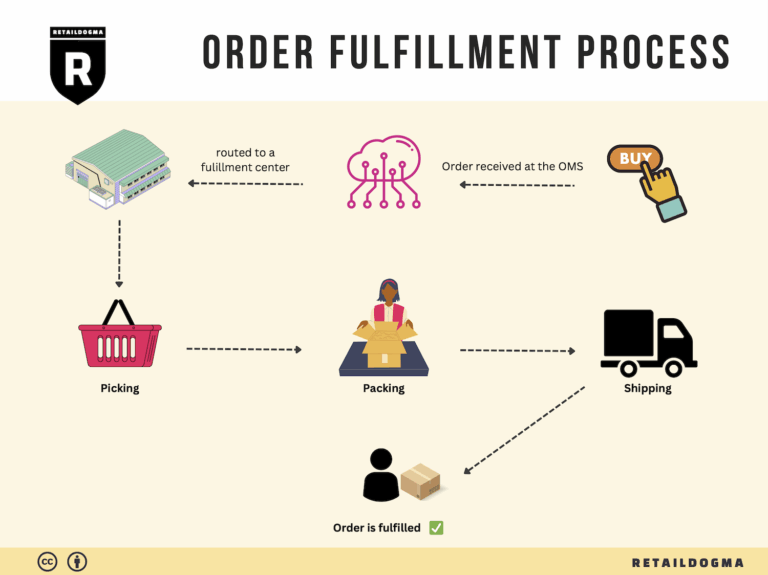Ecommerce Fulfillment Services: The Ultimate Guide (2025)
What is E-commerce Fulfillment? An Introduction for Growing Businesses
As your e-commerce business begins to grow, you may find yourself facing the daunting task of managing the packing and shipping of orders. This common pain point can quickly become overwhelming, leading to delays, errors, and ultimately, unhappy customers. The process of fulfillment—essentially, getting a product from your warehouse to your customer’s doorstep—can be a complex and time-consuming endeavor.
Understanding E-commerce Fulfillment
E-commerce fulfillment encompasses all the steps involved in processing an order, including inventory management, order processing, picking and packing items, shipping, and handling returns. When done efficiently, fulfillment can enhance customer satisfaction and loyalty, while also allowing you to focus on scaling your business rather than getting bogged down in logistics.
What This Guide Will Cover
This comprehensive guide will walk you through the various models of e-commerce fulfillment available to growing businesses. We will explore options such as Third-Party Logistics (3PL) and Fulfillment by Amazon (FBA), each offering unique advantages depending on your specific needs.
Additionally, we will delve into the core services associated with fulfillment, which may include storage, inventory management, order processing, and shipping. Understanding these services will help you identify what you require from a fulfillment partner.
Choosing the right fulfillment partner is crucial for your business’s success. We will outline key factors to consider when selecting a partner, including their expertise, technology, scalability, and customer service capabilities.
Finally, we will discuss pricing structures that you might encounter in the fulfillment landscape. Understanding how costs are calculated—be it through storage fees, shipping charges, or per-order fees—will empower you to make informed financial decisions.
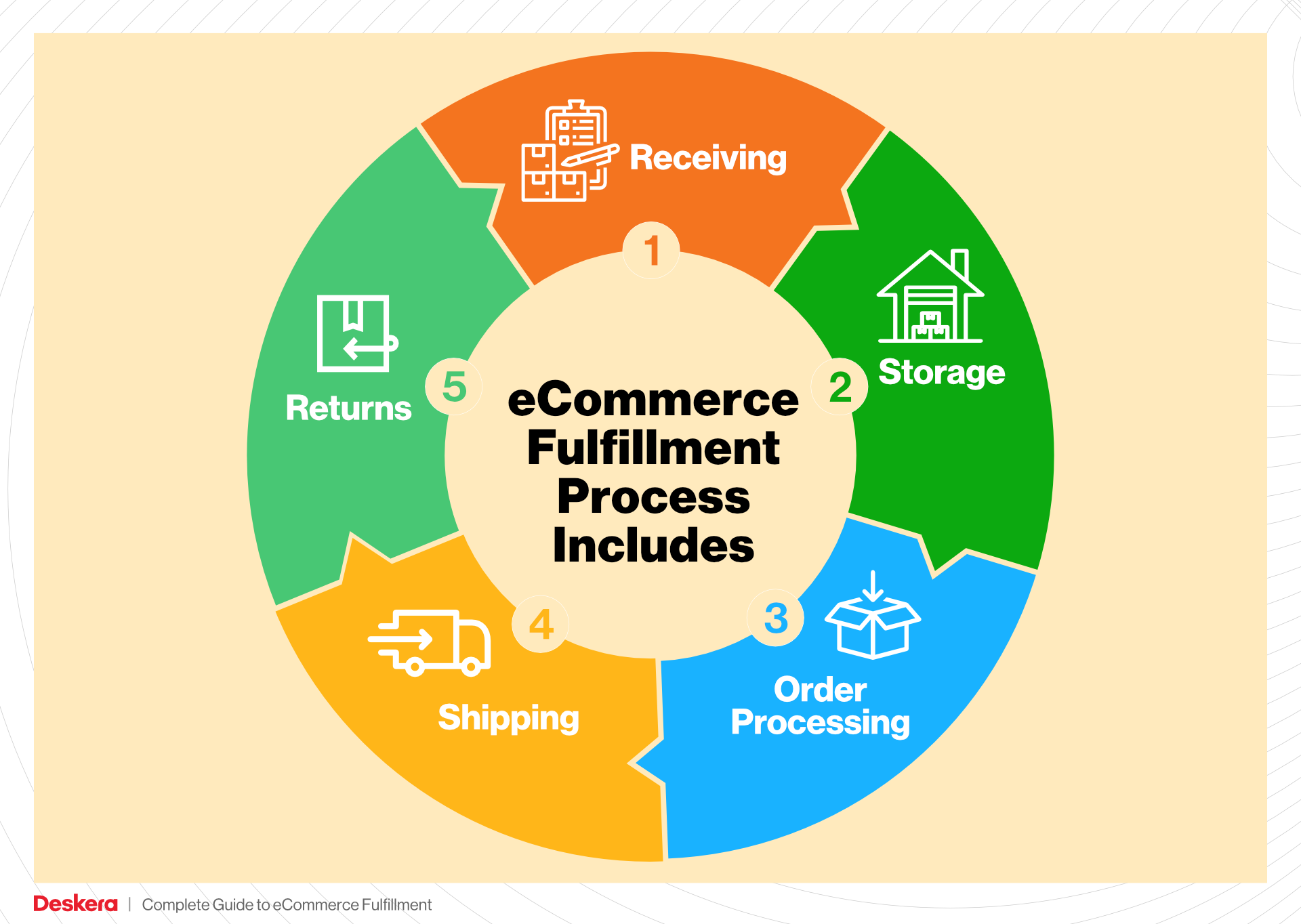
Empowering Your Business Decisions
The ultimate goal of this guide is to empower you, the business owner, to make smart decisions about your logistics and fulfillment strategies. By equipping you with the knowledge of different fulfillment models, core services, and partner selection criteria, we aim to help you streamline your operations, improve customer satisfaction, and foster growth in your e-commerce venture. As you navigate the complexities of fulfillment, remember that a well-structured logistics plan can be a game-changer for your business’s success.
What You’ll Learn In This Guide
- What is E-commerce Fulfillment? An Introduction for Growing Businesses
- The Order Fulfillment Process: From ‘Buy’ Button to Customer’s Door
- Comparing Fulfillment Models: In-House vs. 3PL vs. Dropshipping
- A Deep Dive into Amazon FBA: Pros, Cons, and Who It’s For
- Core Services Offered by Fulfillment Centers
- How to Choose a Fulfillment Partner: A 6-Point Checklist
- Understanding Fulfillment Pricing: A Breakdown of Common Fees
- Frequently Asked Questions (FAQs) about Fulfillment
- Conclusion: Is Outsourcing Fulfillment the Right Move for Your Business?
- Important Disclaimer
The Order Fulfillment Process: From ‘Buy’ Button to Customer’s Door
1. Receiving Inventory
The order fulfillment process begins with receiving inventory, a critical step where products are checked for quality and quantity against purchase orders. During this stage, the receiving team verifies that the correct items have arrived and that they are in satisfactory condition. A key term associated with this step is SKU (Stock Keeping Unit), which is a unique identifier for each product.
Why is this step important? Proper inventory receiving ensures that businesses maintain accurate stock levels, which directly impacts their ability to fulfill customer orders efficiently. If discrepancies occur—such as receiving damaged goods or incorrect quantities—this can lead to delays and customer dissatisfaction. Therefore, implementing a robust receiving protocol, including quality checks and accurate data entry, is essential for smooth operations.
2. Warehouse Storage
Once inventory is received, it is moved to warehouse storage. This involves organizing products in designated areas within the warehouse to optimize space and accessibility. Effective warehouse storage employs systematic methods, such as ABC analysis, where items are categorized based on their sales volume and frequency of use.
The importance of this step lies in its impact on order fulfillment speed. Properly organized storage allows for quick access to products, reducing the time needed to pick orders. Additionally, efficient storage solutions help minimize the risk of inventory loss or damage, ensuring that businesses can meet customer demands promptly. Implementing inventory management software can further enhance tracking and organization.
3. Order Picking
Following warehouse storage, the next step is order picking, where items are selected from the shelves based on customer orders. This process typically uses pick lists, which detail the items and quantities required for each order. Order pickers follow these lists to gather products efficiently.
This step is crucial because it directly affects order accuracy and speed. Mistakes in picking can lead to incorrect shipments, resulting in returns and dissatisfied customers. To enhance accuracy, many businesses implement technologies such as barcode scanners or automated picking systems. Additionally, employing strategies like batch picking—where multiple orders are picked simultaneously—can significantly increase efficiency and reduce labor costs.
4. Order Packing
After items are picked, they move to the order packing stage. Here, products are carefully packed into shipping boxes, ensuring they are secure and protected during transit. This step often involves the use of packing slips, which accompany each order and provide a summary of the items included.
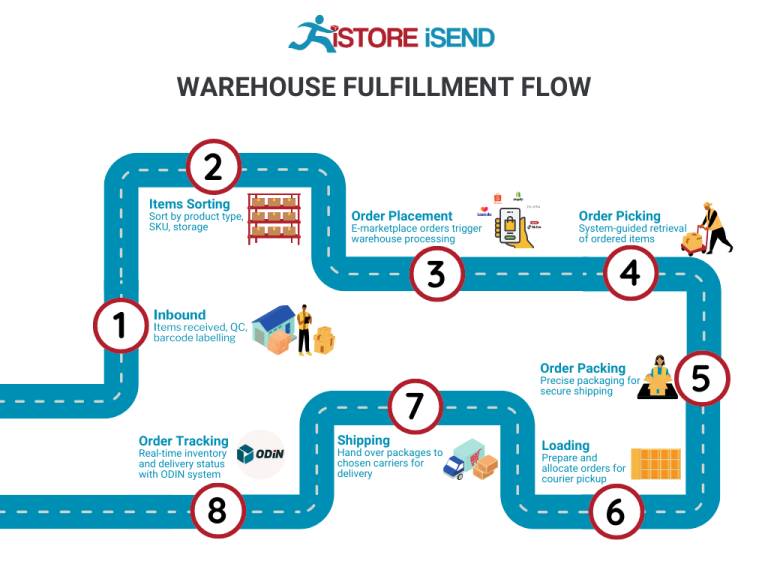
The importance of proper packing cannot be overstated. Well-packed items reduce the likelihood of damage during shipping, enhancing customer satisfaction upon delivery. Additionally, effective packing can help manage shipping costs, as optimizing box sizes and materials can lead to lower freight charges. Businesses should also consider branding opportunities during this stage, using custom packaging to enhance the customer experience and reinforce brand identity.
5. Shipping & Delivery
The final step in the order fulfillment process is shipping and delivery, where packed orders are dispatched to customers. This involves selecting appropriate shipping carriers, generating shipping labels, and tracking shipments until they reach their final destination. A key term here is last-mile delivery, which refers to the final leg of the delivery journey from the distribution center to the customer’s door.
This step is vital as it directly influences customer satisfaction and retention. Timely and reliable delivery is often a deciding factor for customers when choosing to shop with a particular retailer. To optimize this stage, businesses can leverage shipping software that compares rates from various carriers, ensuring they choose the most cost-effective and reliable options. Additionally, providing customers with tracking information empowers them to monitor their orders, further enhancing their shopping experience.
In conclusion, mastering the order fulfillment process from receiving inventory to shipping and delivery is essential for scaling e-commerce businesses. By implementing best practices at each step, business owners can improve operational efficiency, enhance customer satisfaction, and ultimately drive sales growth.
Comparing Fulfillment Models: In-House vs. 3PL vs. Dropshipping
Fulfillment Model Comparison
| Model | Who Handles Inventory | Best For (Business Stage) | Key Advantage | Key Disadvantage |
|---|---|---|---|---|
| In-House Fulfillment | The business itself | Established businesses with stable demand | Full control over inventory and operations | High overhead costs and complexity |
| Third-Party Logistics (3PL) | An external logistics provider | Startups to mid-sized businesses | Scalability and reduced operational burden | Less control over fulfillment processes |
| Dropshipping | Suppliers or manufacturers | Startups and businesses testing markets | Low startup costs and no inventory risk | Lower profit margins and reliance on suppliers |
In-House Fulfillment
In-house fulfillment involves managing the entire supply chain process within the business itself. This includes purchasing inventory, warehousing, picking, packing, and shipping orders directly to customers. This model is ideal for established businesses with stable demand, as it allows for full control over inventory management, order accuracy, and customer service. Businesses can tailor their fulfillment processes to meet specific customer needs and preferences, which can lead to enhanced customer satisfaction and loyalty. However, the key disadvantage of in-house fulfillment is the high overhead costs associated with maintaining a warehouse, hiring staff, and investing in logistics technology. Additionally, as order volumes grow, the complexity of operations increases, requiring more sophisticated systems and processes to manage efficiently.
Third-Party Logistics (3PL)
Third-party logistics (3PL) providers offer a comprehensive suite of services that include warehousing, order fulfillment, and shipping. Businesses outsource these operations to leverage the expertise and infrastructure of a specialized logistics provider. This model is particularly beneficial for startups and mid-sized businesses that may not have the resources or desire to handle logistics internally. By partnering with a 3PL, companies can achieve scalability, reduce operational burdens, and focus on their core competencies such as product development and marketing. The primary downside of this model is the loss of control over fulfillment processes. Businesses must rely on their 3PL partner to maintain quality standards and meet delivery timelines, which can pose risks if the provider fails to deliver as expected.
Dropshipping
Dropshipping is a fulfillment method where the retailer does not keep products in stock but instead transfers customer orders and shipment details directly to the supplier or manufacturer. The supplier then ships the products directly to the customer. This model is particularly appealing for startups or businesses testing new markets, as it requires minimal upfront investment and eliminates the risk of holding unsold inventory. Retailers can offer a wide range of products without the financial burden of purchasing inventory upfront. However, dropshipping comes with its own set of challenges, including lower profit margins due to reliance on suppliers for pricing, potential delays in shipping, and a lack of control over product quality and fulfillment speed. Businesses must also manage customer service issues related to returns and refunds, which can complicate the customer experience.
Conclusion
Choosing the right fulfillment model is crucial for e-commerce businesses aiming to scale their operations effectively. Each model—In-House, 3PL, and Dropshipping—has its own advantages and disadvantages that can significantly impact a business’s logistics strategy. By understanding these differences, business owners can make informed decisions that align with their operational capabilities, growth objectives, and customer expectations.
A Deep Dive into Amazon FBA: Pros, Cons, and Who It’s For
Understanding Fulfillment by Amazon (FBA)
Fulfillment by Amazon (FBA) is a service that allows e-commerce sellers to store their products in Amazon’s fulfillment centers. Amazon takes on the responsibility of storage, packaging, and shipping of products directly to customers. This service is particularly beneficial for sellers looking to scale their operations, as it simplifies logistics and leverages Amazon’s extensive customer base and fulfillment network.
How FBA Works
-
Product Listing: Sellers create product listings on Amazon’s marketplace. They can choose to use FBA for some or all of their products.
-
Shipping Inventory: Sellers ship their inventory to Amazon’s fulfillment centers. Amazon provides guidance on how to prepare and package products to meet their requirements.
-
Storage and Handling: Once the products arrive at the fulfillment center, they are stored until sold. Amazon manages all aspects of storage, ensuring products are safe and organized.
-
Order Fulfillment: When a customer orders a product, Amazon picks, packs, and ships the item. This process is streamlined to ensure quick delivery, typically within one to two days for Prime members.
-
Customer Service: Amazon handles customer inquiries and returns for FBA products, allowing sellers to focus on other aspects of their business.
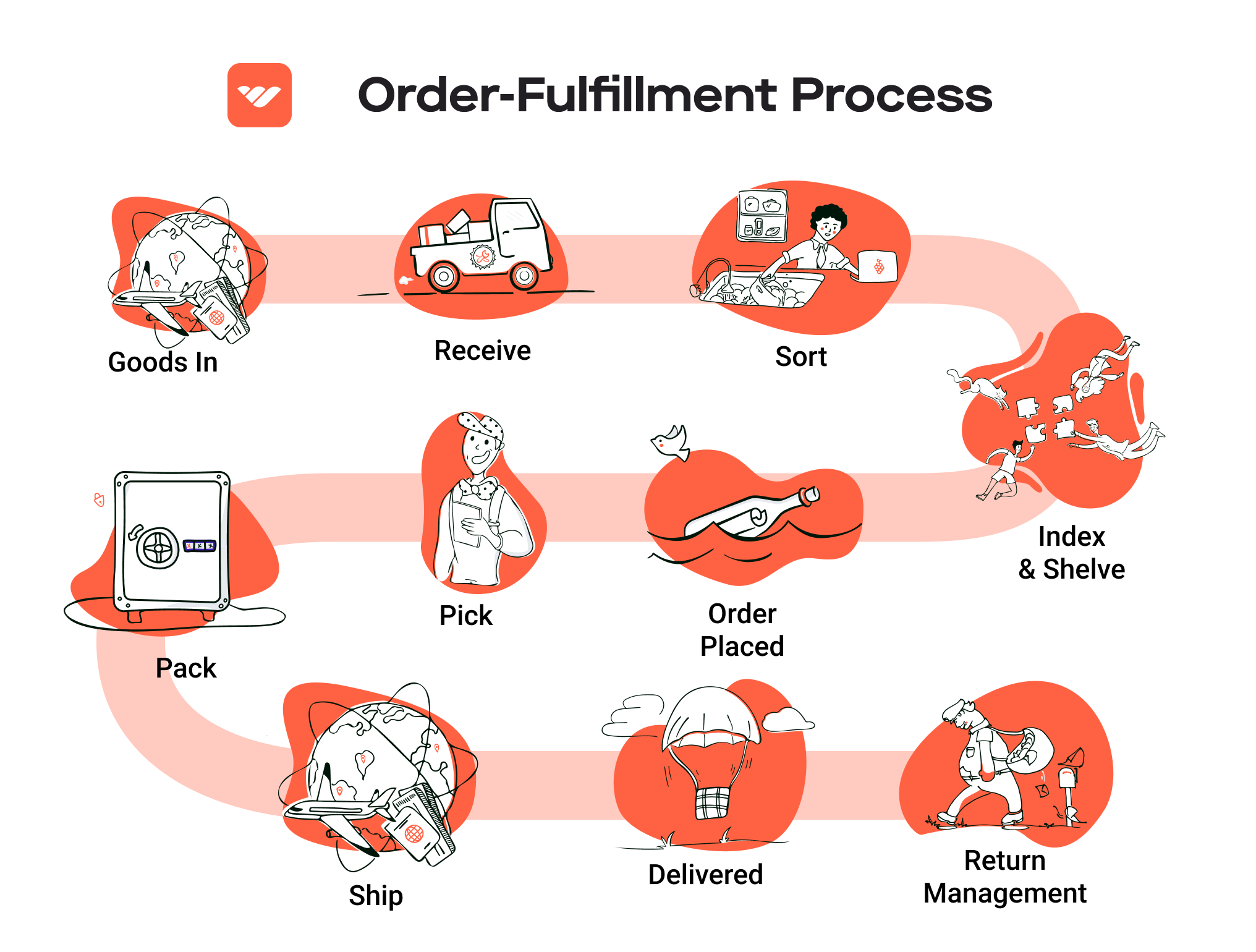
-
Fees: Sellers are charged fees for storage and fulfillment services, which vary based on the size and weight of the products.
Pros of Using FBA
-
Prime Eligibility: One of the most significant advantages of FBA is that products become eligible for Amazon Prime. This status can significantly increase sales, as Prime members often prefer to purchase items that offer free two-day shipping.
-
Customer Trust: Amazon is a well-known and trusted brand. By using FBA, sellers can benefit from Amazon’s reputation, which can lead to higher conversion rates and customer loyalty.
-
Multi-Channel Fulfillment: FBA isn’t limited to Amazon sales. Sellers can utilize FBA to fulfill orders from their own e-commerce websites or other marketplaces, streamlining their logistics process across different platforms.
-
Scalability: FBA allows sellers to scale their business without the burden of managing their own warehousing and logistics. This is particularly useful for seasonal spikes in demand or when expanding into new markets.
-
Automated Customer Service: Amazon handles customer inquiries and issues related to shipping and returns, freeing up sellers’ time to focus on other critical business areas.
Cons of Using FBA
-
High Fees: While FBA offers convenience, it comes at a cost. Sellers must pay for storage and fulfillment fees, which can eat into profit margins, especially for low-cost items.
-
Strict Inventory Rules: Amazon has stringent requirements for inventory management, including limits on the number of units that can be stored and strict guidelines on product preparation and labeling. Non-compliance can lead to additional fees or removal of inventory.
-
Commingling Risks: When using FBA, sellers’ products can be commingled with inventory from other sellers. This poses a risk if another seller’s product is defective or if there are issues with counterfeit items. It can lead to complications in resolving customer complaints and may impact seller ratings.
-
Loss of Control: By outsourcing fulfillment to Amazon, sellers lose some control over the customer experience. Issues like packing quality and shipping delays can reflect poorly on the seller, even if the problems arise from Amazon’s side.
-
Long-Term Storage Fees: Products that do not sell quickly may incur long-term storage fees. This can be a concern for seasonal items or products that have unpredictable demand.
Who is FBA Best For?
Fulfillment by Amazon is particularly well-suited for:
-
Small to Medium-Sized Sellers: Businesses looking to expand their reach without investing heavily in logistics infrastructure can benefit from FBA’s comprehensive services.
-
E-commerce Entrepreneurs: Those who are just starting out and want to leverage Amazon’s existing customer base while minimizing the complexities of order fulfillment.
-
Brands with High Volume Sales: Sellers with products that have consistent demand and can absorb the fees associated with FBA will find it advantageous.
-
Businesses Seeking Multi-Channel Sales: Sellers who wish to fulfill orders from multiple channels, including their own websites, can streamline operations through FBA.
-
Seasonal Sellers: Businesses that experience spikes in demand during specific seasons can benefit from FBA’s ability to scale quickly without the need for additional warehousing.
In conclusion, Fulfillment by Amazon offers a powerful solution for sellers looking to streamline their operations and reach a broader audience. However, it’s crucial for businesses to weigh the pros and cons carefully, considering their specific needs and financial situations before committing to this fulfillment model.
Core Services Offered by Fulfillment Centers
Inventory Management & Warehousing
Inventory management and warehousing are foundational services provided by fulfillment centers, crucial for e-commerce businesses looking to scale efficiently. This service involves the systematic storage and tracking of products within a fulfillment center. Each item is stored in a designated area, often organized by categories such as product type, size, or demand frequency.
Benefits:
-
Real-Time Inventory Tracking: Advanced inventory management systems enable businesses to monitor stock levels in real-time. This visibility helps prevent stockouts or overstock situations, ensuring that popular products are always available while minimizing excess inventory costs.
-
Optimized Storage Solutions: Fulfillment centers often employ sophisticated storage techniques, such as FIFO (First In, First Out) or LIFO (Last In, First Out), depending on the nature of the products. This optimization ensures that products are stored efficiently, reducing storage costs and facilitating quicker order fulfillment.
-
Scalability: As e-commerce businesses grow, their inventory needs can fluctuate significantly. Fulfillment centers provide scalable warehousing solutions that can adjust to seasonal demands or unexpected surges in orders, allowing businesses to focus on growth without the burden of managing physical storage.
Pick and Pack Services
Pick and pack services are essential for order fulfillment, encompassing the picking of products from inventory and packing them for shipment. This process is typically automated or semi-automated, using technology to enhance efficiency and accuracy.
Benefits:
-
Speed and Efficiency: Fulfillment centers are equipped with systems that streamline the picking process. This results in faster order processing times, which is vital for maintaining customer satisfaction and competitiveness in the e-commerce space.
-
Accuracy in Order Fulfillment: Automated picking systems reduce the risk of human error, ensuring that the correct items are picked and packed. High accuracy levels lead to fewer returns due to incorrect orders, thereby enhancing customer trust and loyalty.
-
Custom Packaging Options: Many fulfillment centers offer customizable packing solutions that can include branded packaging or special inserts, allowing businesses to enhance their brand identity while also providing a memorable unboxing experience for customers.
Kitting and Assembly
Kitting and assembly services involve the grouping of individual products into ready-to-sell packages. This can include bundling related products together or assembling components into a final product. This service is particularly valuable for e-commerce businesses selling complex items or promotional bundles.
Benefits:
-
Enhanced Product Offerings: By offering bundled products, businesses can create value for customers while increasing average order values. Kitting allows businesses to present products in a way that encourages additional purchases and can lead to higher overall sales.
-
Streamlined Operations: Outsourcing kitting and assembly to fulfillment centers reduces the operational burden on e-commerce businesses. This allows internal teams to focus on core activities such as marketing and customer service, rather than labor-intensive assembly tasks.
-
Improved Inventory Management: Kitting can also simplify inventory management by reducing the number of SKUs that need to be tracked. Instead of managing each item separately, businesses can manage bundled SKUs, which can streamline both inventory and reporting processes.
Returns Management (Reverse Logistics)
Returns management, or reverse logistics, is the process of handling product returns from customers. This service is vital for e-commerce businesses, as return rates can be significantly higher in online shopping compared to traditional retail.
Benefits:
-
Efficient Return Processing: Fulfillment centers provide specialized services for managing returns, including inspecting returned items, restocking them, and updating inventory levels. This efficiency minimizes the time and cost associated with processing returns.
-
Data Insights: Effective returns management can yield valuable data insights regarding customer preferences and product issues. Analyzing return reasons helps businesses identify trends, improve product quality, and enhance customer satisfaction.
-
Customer Experience Enhancement: A seamless returns process is a key component of customer service in e-commerce. Fulfillment centers often provide easy-to-follow return instructions and quick processing times, which can improve customer perceptions of the brand and encourage repeat purchases.
In summary, partnering with a fulfillment center can significantly enhance the operational efficiency of e-commerce businesses. By leveraging services such as inventory management, pick and pack, kitting and assembly, and returns management, businesses can streamline their logistics, improve customer satisfaction, and ultimately drive sales growth.
How to Choose a Fulfillment Partner: A 6-Point Checklist
Location & Warehouse Network
Importance: The geographical location of your fulfillment partner’s warehouses can significantly impact shipping times and costs. A partner with strategically placed facilities can help you reach your customers faster and at lower shipping rates.
Questions to Ask:
1. Where are your warehouses located?
2. Do you have a network of warehouses that can cover my target markets effectively?
3. What is your average shipping time from these locations?
4. How do you handle shipping to remote areas or international destinations?
Technology & Integrations
Importance: In today’s fast-paced e-commerce environment, robust technology and seamless integration with your existing systems are crucial. This includes inventory management, order processing, and real-time tracking capabilities.
Questions to Ask:
1. What technology platform do you use for order fulfillment?
2. Can your system integrate with my e-commerce platform (e.g., Shopify, WooCommerce)?
3. Do you provide real-time tracking for orders, and how can I access this data?
4. How do you handle inventory management and updates?
Specializations (e.g., cold storage, oversized items)
Importance: Depending on your product line, you may require specific storage solutions. For example, if you sell perishable goods, a fulfillment partner with cold storage capabilities is essential. Similarly, if you handle oversized items, ensure the partner can accommodate these requirements.
Questions to Ask:
1. Do you have specialized storage options for my product type (e.g., cold storage, hazardous materials)?
2. What equipment and facilities do you have to handle oversized or fragile items?
3. Can you provide case studies or examples of how you’ve managed similar products in the past?
4. What safety measures do you have in place for specialized items?
Scalability & Capacity
Importance: As your business grows, your fulfillment needs will change. A good partner should be able to scale operations in line with your growth, whether that’s increasing order volumes during peak seasons or expanding to new markets.
Questions to Ask:
1. How do you handle fluctuations in order volume?
2. What is your maximum capacity for storage and order fulfillment?
3. Can you provide examples of how you have scaled operations for other clients?
4. What processes do you have in place for onboarding new clients or new product lines?
Pricing and Contracts
Importance: Understanding the pricing structure and contract terms upfront can prevent unexpected costs and ensure you choose a partner that fits your budget. Look for transparency in pricing and flexibility in contracts.
Questions to Ask:
1. What is your pricing model (e.g., per order, per item, monthly fees)?
2. Are there any hidden fees I should be aware of (e.g., storage fees, pick-and-pack fees)?
3. What are the terms of your contract, and is there flexibility if my needs change?
4. Do you offer any volume discounts for larger order quantities?
Customer Support & Reviews
Importance: Reliable customer support is vital for addressing issues that may arise during order fulfillment. Additionally, checking reviews can provide insights into the partner’s reliability and service quality.
Questions to Ask:
1. What customer support options do you offer (e.g., phone, email, live chat)?
2. What are your average response times for support inquiries?
3. Can you provide references or case studies from current or past clients?
4. How do you handle issues like order discrepancies or shipping delays?
Conclusion
Choosing the right fulfillment partner is critical for the success of your e-commerce business. By considering these six points—Location & Warehouse Network, Technology & Integrations, Specializations, Scalability & Capacity, Pricing and Contracts, and Customer Support & Reviews—you can make an informed decision that aligns with your business objectives. Take the time to ask the right questions and evaluate potential partners thoroughly to ensure a partnership that supports your growth and enhances your customer experience.
Understanding Fulfillment Pricing: A Breakdown of Common Fees
Initial Setup Fees
Initial setup fees are one-time charges that cover the cost of establishing your account with a fulfillment provider. This fee often includes the costs associated with integrating your e-commerce platform with the fulfillment system, which may involve technical setup, data migration, and configuring your inventory management system.
Calculation: These fees can vary widely based on the complexity of your needs. For instance, if you require custom software integrations or advanced reporting features, the costs can be significantly higher. Typically, initial setup fees range from a few hundred to several thousand dollars. It’s essential to clarify what services are included in this fee to avoid unexpected costs.
Receiving Fees
Receiving fees are charged for the process of unloading, inspecting, and storing incoming inventory. This fee ensures that the fulfillment center can manage your stock efficiently and accurately.
Calculation: Receiving fees are usually calculated per pallet or per item received. For example, a fulfillment center might charge $20 per pallet or $0.50 per item. Some providers may also charge for additional services such as quality checks or labeling. Understanding the volume of your incoming shipments will help you estimate these costs effectively.
Storage Fees (per pallet/bin)
Storage fees are recurring charges for keeping your inventory in the fulfillment center’s warehouse. This fee is crucial for covering the costs associated with warehousing, including utilities, labor, and space management.
Calculation: Storage fees are typically billed monthly and can be charged per pallet or per bin. Rates can range from $10 to $50 per pallet per month, depending on factors such as location, warehouse size, and the type of inventory being stored. Additionally, some fulfillment centers may offer tiered pricing based on the volume of storage you require, providing discounts for larger quantities.
Pick & Pack Fees (per item/order)
Pick and pack fees are charged for the labor involved in retrieving items from storage and packaging them for shipment. This is a crucial aspect of fulfillment, as it directly affects order accuracy and customer satisfaction.
Calculation: These fees are generally calculated per item picked and packed, with average costs ranging from $1 to $3 per item. Some fulfillment centers may charge a flat fee per order, which can be beneficial if you have many items in each order. It’s important to discuss your order profile with your fulfillment provider to understand how these fees will impact your overall costs.
Shipping Fees
Shipping fees cover the costs of transporting your products from the fulfillment center to your customers. These fees can vary based on several factors, including the shipping method, destination, package weight, and dimensions.
Calculation: Shipping fees are usually calculated based on the carrier’s rates, which can fluctuate based on fuel costs and other market conditions. Fulfillment providers often negotiate shipping rates with carriers and may pass these savings on to you. It’s crucial to ask your fulfillment partner about the shipping options available and how they determine shipping costs, as they may offer discounts for bulk shipping or specific carrier partnerships.
Tips for Getting an Accurate Quote
-
Provide Detailed Information: When requesting a quote, be as detailed as possible about your inventory, order volume, and shipping needs. This includes specifying the types of products you sell, average order size, and seasonal fluctuations.
-
Ask About Hidden Fees: Ensure you inquire about any potential hidden fees that may not be included in the initial quote, such as surcharges for special handling, returns processing, or additional services like kitting.
-
Compare Multiple Providers: Don’t settle for the first quote you receive. Compare offers from several fulfillment providers to find the best fit for your business needs. Look beyond price; consider the level of service and support they offer.
-
Request a Trial Period: If possible, negotiate a trial period to assess the fulfillment provider’s services before committing long-term. This will allow you to gauge their efficiency and reliability without a significant upfront investment.
-
Review Terms Regularly: As your business scales, your fulfillment needs may change. Regularly review your agreement and pricing structures with your fulfillment partner to ensure you are getting the best value as your business evolves.
By understanding these common fulfillment pricing models and following these tips, you can make informed decisions that will help your e-commerce business thrive.
Frequently Asked Questions (FAQs) about Fulfillment
1. What is sportsman fulfillment?
Sportsman fulfillment refers to the specialized logistics and order fulfillment services tailored for businesses that sell sporting goods, firearms, and related accessories. This includes warehousing, inventory management, order processing, and shipping specifically designed to meet the unique needs of the sporting goods market.
2. What is a fulfillment center?
A fulfillment center is a specialized warehouse where inventory is stored, orders are picked, packed, and shipped to customers. Unlike a traditional warehouse that primarily focuses on storage, a fulfillment center is equipped to handle the entire order fulfillment process, including returns management and customer service.
3. What is a 3PL (Third-Party Logistics)?
A 3PL, or third-party logistics provider, is a company that offers outsourced logistics services, which can include transportation, warehousing, inventory management, order fulfillment, and distribution. Businesses often partner with a 3PL to improve efficiency and reduce costs associated with their logistics operations.
4. How much do fulfillment services cost?
The cost of fulfillment services can vary widely based on several factors, including the volume of orders, the size and weight of products, storage fees, and additional services such as kitting or custom packaging. Typically, fulfillment costs can range from $2 to $5 per order, with additional storage fees that may vary from $10 to $30 per pallet per month. It’s essential to evaluate your specific needs and compare quotes from multiple providers to find the best fit.
5. How does shipping work with sportsman fulfillment?
Shipping in sportsman fulfillment generally involves selecting a carrier that complies with regulations for shipping firearms and related products. Once an order is placed, it is processed within a specified timeframe (often within 48 hours for firearms), and the product is shipped to the customer using the chosen carrier. Tracking information is usually provided to ensure transparency throughout the shipping process.
6. Can I track my order during fulfillment?
Yes, most sportsman fulfillment services provide tracking information once an order is shipped. This allows you to monitor the status of your order and receive updates on its delivery. Make sure to check your email or the fulfillment center’s customer portal for tracking details.
7. What happens if an item is out of stock?
If an item is out of stock, most fulfillment centers will not allow back orders. Instead, customers can sign up for notifications to be alerted when the item becomes available again. This ensures customers are informed and can place an order as soon as stock is replenished.
8. Can I make changes to my order after it’s placed?
Typically, once an order has been submitted, it cannot be modified. Customers may have the option to cancel the order and place a new one if needed. It is advisable to review your order carefully before completing the checkout process to avoid such issues.
9. How do I ensure compliance with firearms shipping regulations?
Compliance with firearms shipping regulations is critical. Partnering with a fulfillment service that specializes in sportsman goods is essential, as they will have the necessary knowledge and infrastructure to handle compliance. This includes verifying customer eligibility, managing FFL (Federal Firearms License) transfers, and adhering to local and federal regulations.
10. What are the benefits of using a specialized fulfillment service for sporting goods?
Using a specialized fulfillment service for sporting goods offers several advantages, including:
- Expertise in Compliance: Knowledgeable staff ensure all regulations are met for shipping firearms and ammunition.
- Faster Shipping Times: Efficient processes allow for quicker order processing and shipping.
- Inventory Management: Tailored systems help manage stock levels effectively, reducing the risk of stockouts.
- Scalability: As your business grows, a specialized fulfillment service can easily scale operations to meet increasing demand without compromising service quality.
By leveraging these benefits, businesses can enhance customer satisfaction and focus on scaling their operations.
Conclusion: Is Outsourcing Fulfillment the Right Move for Your Business?
Evaluating the Benefits of Outsourcing Fulfillment
Outsourcing fulfillment can be a transformative decision for e-commerce businesses, especially those in the specialized niche of sportsman products. The primary advantages include significant time savings, enhanced scalability, and access to specialized expertise. By delegating the complexities of inventory management, order processing, and shipping logistics to a dedicated fulfillment partner, you free up valuable time that can be redirected towards growth initiatives, marketing strategies, and customer engagement.
Moreover, a fulfillment service allows your business to scale efficiently. As your sales volume fluctuates—whether due to seasonal demand, promotions, or expanding product lines—your fulfillment partner can adjust resources and capabilities accordingly. This flexibility not only ensures that you can meet customer expectations but also helps you manage costs effectively.
Additionally, partnering with an experienced fulfillment provider brings invaluable expertise to the table. These professionals are well-versed in best practices, compliance regulations, and industry standards, particularly crucial in the firearms and sporting goods sectors. Their knowledge can help mitigate risks associated with shipping restrictions and product handling, ensuring that you stay compliant while maintaining high service levels.
However, choosing the right fulfillment partner is critical to your business’s success. Not all providers are created equal, and aligning your operational needs with a partner that understands your niche market is essential for growth.
Take Action Today
To determine if outsourcing fulfillment is the right move for your business, conduct a thorough audit of your current shipping and logistics processes. Assess your operational pain points, costs, and customer satisfaction levels. This evaluation will help you identify whether partnering with a fulfillment service can enhance your efficiency and profitability. As you explore your options, consider reaching out to industry-specific fulfillment providers who can offer tailored solutions that align with your growth objectives.
Important Disclaimer
⚠️ Important Disclaimer
The information in this guide is for educational purposes. Fulfillment services, pricing, and platform features change frequently. Always conduct your own due diligence and consult with providers directly before making business decisions.
